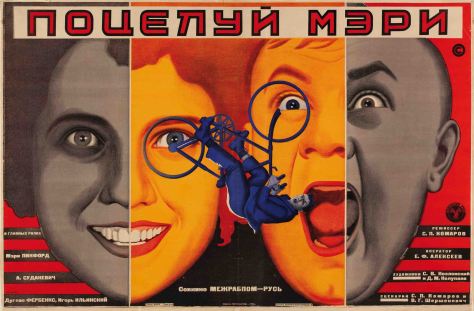There are a handful of silent films that most cinephiles see first. Battleship Potemkin, Metropolis, Sunrise, The General and The Cabinet of Dr Caligari perhaps, give or take Nosferatu, a Hitchcock and a couple more Hollywood favourites. There is nothing dismaying about the establishment of these films as classics of the silent era, widely available on DVD and at festival screenings. However, this very select canon can offer a distorted picture of the period. At the very least, there is a risk that these isolated examples are heralded as rare triumphs from a primitive age.

This is where Lawrence Napper’s engaging guide to late silent film comes in. Silent Cinema: Before the Pictures Got Small offers a broader picture of film style and the film industry between the First World War and the coming of sound. The opening chapter begins with the audience, tracing the history of filmgoing in this period, using the depiction of cinemas in silent movies. Subsequent sections provide context for those film-club favourites, outlining the industry and aesthetics of the cinema in Germany, Russia and America.

In these chapters, Napper revisits and challenges some fondly held views. Particularly, he stresses that there is far more to the national silent cinemas of Germany and Russia than Expressionism or Soviet montage respectively. He follows a detailed discussion of Caligari with the suggestion that the reader looks at Ernst Lubitsch comedies such as The Oyster Princess and The Doll to discover similar stylisation in both performance and design but applied in the name of pleasure and humour rather than the evocation of psychological trauma.

Likewise, the Russian section moves on from the montagists to comedies and dramas: from the ‘Americanitis’ caper A Kiss from Mary Pickford to the social problem film Bed and Sofa. It also makes space a close look at the pre-revolutionary artistry of Yevgeni Bauer. The Hollywood chapter considers the role of immigrants and the “desiring feminine gaze” (exemplified by Clara Bow in It) alongside expected subjects such as the development of continuity editing and the Hollywood studio system.

The final, passionately argued, chapter makes the case for British cinema in the 1920s – from Cecil Hepworth’s sumptuous pictorialist dramas earlier in the decade to sophisticated later works such as Maurice Elvey’s Hindle Wakes and Anthony Asquith’s Shooting Stars. There are references too, to Alfred Hitchcock, director of the best known British silents, who later “liked to convey the impression that he had been a lone genius in Britain, working alongside a collection of amateurs”.
This is a short book, but one that is filled with ideas, fresh approaches to classic films and a palpable enthusiasm for the subject. It will prove invaluable to students and refreshing to those better versed in this period.
- You can order Lawrence Napper’s Silent Cinema: Before the Pictures Got Small review online here.
- You can listen to Napper discussing his book with Jose Arroyo here.
- This review first appeared in Sight & Sound magazine last year. I’m reposting it here because of the book’s success in the Silent London Poll of 2017.

Great reading your bllog post